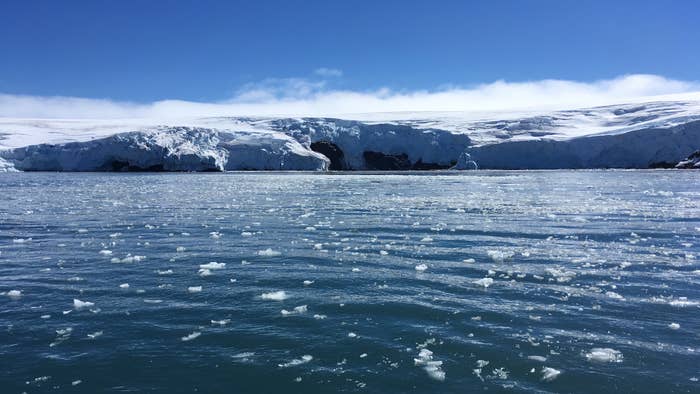
While most of the snow in Antarctica is white, snow found on its coast can be green—and as global temperatures rise, more green snow has been found across the continent.
Small amounts of green snow have always been visible in Antarctica, which is caused by microscopic algae blooming on top of the snow, according to a new study published in the journal Nature Communications. Researchers at the University of Cambridge and the British Antarctic Survey used satellite data and fieldwork studies to develop the first leading map of the continent’s green algae and forecasted how the snow will expand.
The algae grow in “warmer” areas, places where the median temperatures are slightly above freezing during the summer months. While single algae are minuscule, large swaths of the green snow are visible from space.
Researchers studied fieldwork from two summers in Antarctica and images that the European Space Agency's Sentinel 2 satellite captured between 2017 and 2019. The team found more than 1,600 individual algal blooms on the snow’s surface.
The team also discovered that the algae’s dissemination is affected by marine birds and mammals, since their feces act as a fertilizer. More than 60 percent of the algal blooms were close to birds’ nesting sites.
“This is a significant advance in our understanding of land-based life on Antarctica, and how it might change in the coming years as the climate warms,” lead author Dr. Matt Davey of the University of Cambridge said in a press release, per CBS.
It’s likely that climate change will impact bird populations, and if so, the algae could be deprived of vital nutrients it needs to grow. Still, the study showed that the organisms will spread as the climate warms—something that will be available to the algae in Antarctica, since the continent is melting at an alarming rate.
“As Antarctica warms, we predict the overall mass of snow algae will increase, as the spread to higher ground will significantly outweigh the loss of small island patches of algae,” co-lead author Dr. Andrew Gray, of the University of Cambridge and the University of Edinburgh, said per CBS.
Researchers don’t know what effect the algae will have on the Earth. While it draws carbon dioxide from the atmosphere via photosynthesis, it also darkens snow and soaks up more of the sun’s rays. The spreading algae generate a carbon sink that absorbs around 500 tons of carbon annually, which is equal to almost 875,000 average car rides in the U.K.
The amount of green snow the scientists detected is a cautious measurement since the satellite was unable to pick up the green organism’s neighboring red and orange algae. “The snow is multi-colored in places, with a palette of reds, oranges and greens—it's quite an amazing sight,” Davey said.

